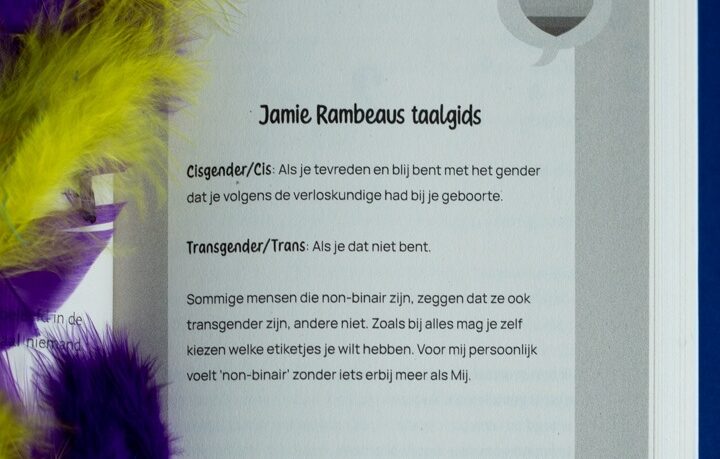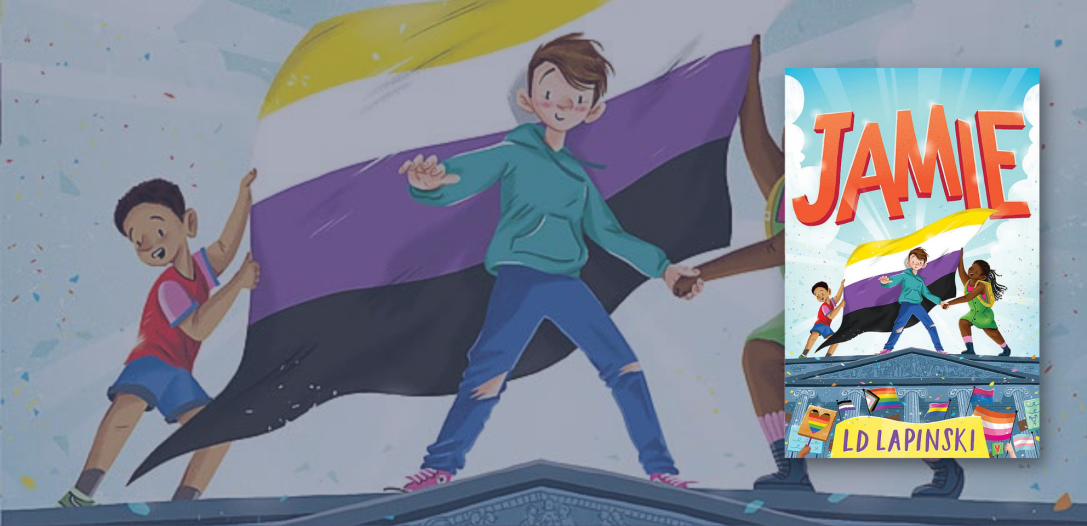By Maria – Nefeli Andredaki,
As mentioned in a previous article, literature is an extremely valuable tool in the foreign language classroom. It is a way for learners to engage with entertaining content in the target language, identify with different characters, develop empathy, acquire values, and come in contact with the foreign language in an authentic, meaningful way that cannot be achieved through textbooks. In this particular article, I want to focus on a children’s book, I recently read, called Jamie, which can be used in many different ways inside the English classroom.
Jamie is a story about the struggles of non-binary children who are fighting for the chance to be seen and accepted for what they are. It is also a tale about the value of friendship and the sacrifices one has to make for their friends. More specifically, Jamie Rambeau is a non-binary elementary school student who is asked to decide which middle school they would like to attend in the next year. The problem? Their only two options are a boys’ and a girls’ middle school, which sheds light on the erasure and intolerance non-binary children (and adults) face. Thanks to their supportive friends, Jamie manages to bring attention to the issue and create a discussion that leads to progress.
But how can this book be used for language teaching? First and foremost, what I personally appreciated the most from this book is the addition of word definitions at the end of nearly every chapter. The definitions range from “pronouns” and “misgendering” to “discrimination” and “consequences”, and are offered from the perspective of Jamie in their own “elementary school” vocabulary, making them fun and easy to understand. Of course, most of the book deals with gender and LGBTQ issues, however, many of the words and themes can be applied to different things as well.

This takes me to my next point; the subject of friendship. It is made perfectly clear that Jamie could have never achieved their goals without the help, support, and constant sacrifices of their friends, Ash and Daisy. The three of them get themselves into unimaginable adventures, in order to prove a point and relentlessly fight for what is right. They do, however, experience some turbulence, when their ego gets in the way or when they get too caught up in purpose and forget about the others’ feelings. Extracts from these dialogues that deal with the precarity and value of friendship could be used for many reading exercises, but, most importantly, to generate discussions and opinion essays on this matter.
In addition to that, the concept of fighting for your rights, which is essential in this book, is delivered in an extremely digestible way and can be applied in writing, speaking, or even group projects! On page 78, Jamie and Ash create a list of demands for their school that signifies the start of a non-binary rights campaign. Learners could be asked to make their own posters of demands and changes that they would like to see in their schools and present them to the rest of the class. This particular exercise combines English learning, collaboration, public speaking (presenting), and understanding the concept of fighting for your rights. A typical textbook grammar exercise could never amount to that.
As far as gender territory is concerned, it is true that the English teacher should probably consult their Head teacher or superior, as it is a topic that is not always accepted and could be interpreted wrongly. However, if their circumstances allow it, Jamie is the best book for an opportunity to discuss what it means to be non-binary, what it means to have different pronouns, and how that affects everyone’s lives in our current society. There is also a plethora of other queer characters, as well as skeptics. Learners could be asked to role-play/ express their opinions and justify the actions and stances of the different characters; what would they do in their place? Did they act correctly? Why/why not?

These are just a few examples of how a book can be used to attract learners’ interest, develop their language skills, and broaden their horizons. Jamie is very near and dear to my heart, as it constitutes a fraction of the much-needed representation non-binary people deserve. Maybe, if we had been taught about such topics, the world would have been a safer place for all.
In honor of Nex Benedict, may you rest in power.
Reference
- L.D. Lapinski. Jamie. Orion Children’s Books. UK. 2023.




